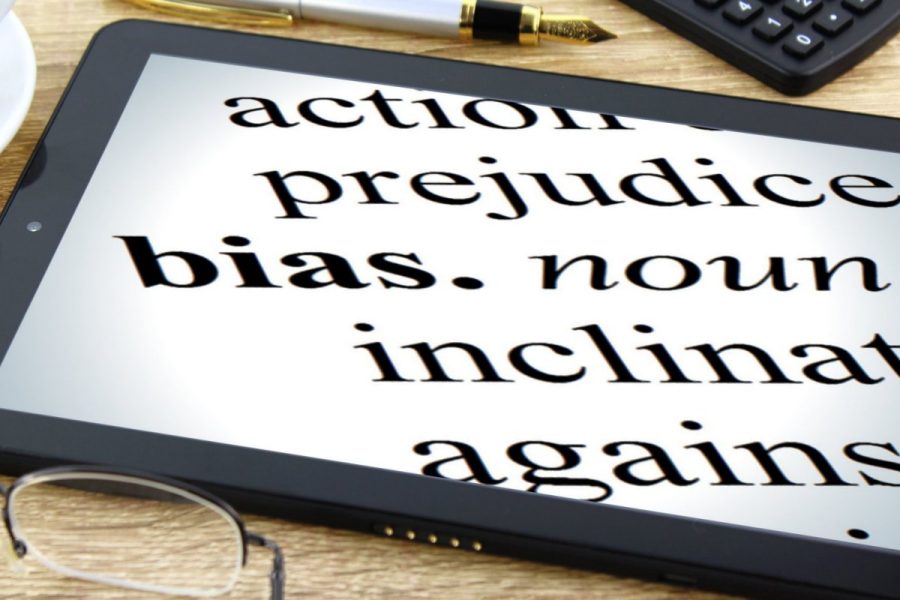What are microaggressions?
Deconstructing one of contemporary society’s biggest faults
Microaggressions often stem from our implicit — subconscious — bias
May 2, 2022
We need to talk about these commonplace slights in daily life.
Put simply, microaggressions are insensitive slights and insults that exist in everyday interactions, with many being widely accepted. Microaggressions can be regarded as having two completely opposite reputations: one being that everyone has gotten too sensitive, and the other being that discrimination is alive and well since it has embedded itself in commonplace pursuits.
Microaggressions are parasites that have infected society and survived off of its constant conflict and ignorance. Microaggressions by anyone and towards anyone, including groups of people who are often microaggressed, have detrimental effects. They are harmful to society and mindsets since they perpetuate racism, sexism and discrimination in general. They have normalized prejudice and inequity in order to continue to survive and thrive. The problem is that microaggressions are essentially a concealed dose of bigotry in society’s veins, and they need to be flushed out.
Racist microaggressions are committed by people who claim to be “color-blind” and say things like “When I look at you, I don’t see color” or “There is only one race: the human race,” which denies a person’s racial, ethnic or cultural identity and experience. Being “color-blind” simply ignores the problem, which leaves it to fester, letting it become more rooted and cause more problems.
Closely connected to “color blindness” is the denial of individual racism through phrases such as “I’m not a racist because I have several black friends” or “As a woman, I understand what you go through as a racial minority,” which attempt to justify immunity to racism while also creating a correlation between two things that do not connect in that way.
Also closely connected to “color blindness” and the denial of individual racism is the myth of meritocracy through the mentality that “everyone can succeed in this society if they work hard enough,” which asserts that people of color are given unfair benefits because of their race, or that they are lazy and/or incompetent and need to work harder while subsequently denying systemic racism. The thing is, the most qualified person should get the job, but we cannot ignore the bias within the system that picks who is the most qualified. Moreover, statements that make people of color feel and be perceived as aliens in their own country and as second-class citizens serve as harmful aggressions. Examples of these statements include “Where are you really from?” and assuming a person of color can only be of one class. The most common types of microaggressions are environmental aggressions that are apparent at systemic levels. The most visible example of this is how television shows and movies feature predominantly white people without any representation of people of color.
For junior Lori Wilson, microaggressions have been presence in her life from a young age.
“In third grade,” she said, “I walked into my class and was greeted by my [white] teacher who said, ‘Wow, your hair looks pretty!’ but then commenting, ‘Wow, is that your real hair?’ I usually wore my hair in some sort of protective style during [that] time, like twists, braids or buns but [that] day I had let it out.”
Many people do not realize what microaggressions are and therefore do not understand their subsequent effects on one’s life. Wilson continues to reflect on the lack of knowledge regarding microaggressions from her teacher.
“I never realized until years after how that was a microaggression,” she said. “The biggest issue with it is that my hair looked too ‘real’ for me, an Afro-Latina girl. My teacher thought that my hair looked more ‘real’ than other days and that that meant it was too ‘real’ to actually grow out of my head. There’s been many other instances of my [white] teachers commenting on my hair like this, or my skin color, and assuming what my ethnicity is in ways that didn’t seem offensive but in reality, were extremely backhanded.”
The University of New Hampshire has a information regarding different scenarios with a focus on gender aggression.
As time goes on, the discrimination goes so deep that the people being discriminated against don’t even realize it. Microaggressions are a form of conditioning that works well since society is ruled by peer pressure. A simple action can be taken to combat microaggressions: thinking. We all need to take some time to thoroughly realize and understand the power and connotation of words. Microaggressions tend to be backhanded compliments, with the backhanded part being discriminatory. If a mistake is made, there is another action that must be taken: calling someone out on their aggressive behavior. Change and growth will not happen if we do not spark them. It will take courage, but harmful behavior cannot be allowed to fester or it will end up worse than it is now. Mistakes will be made, and that is okay as long as we learn from them.
Microaggressions are sly uses of prejudices that our society condemns, and they continue to survive in our society with the same harmful effects as the original aggressions from which they have evolved.







